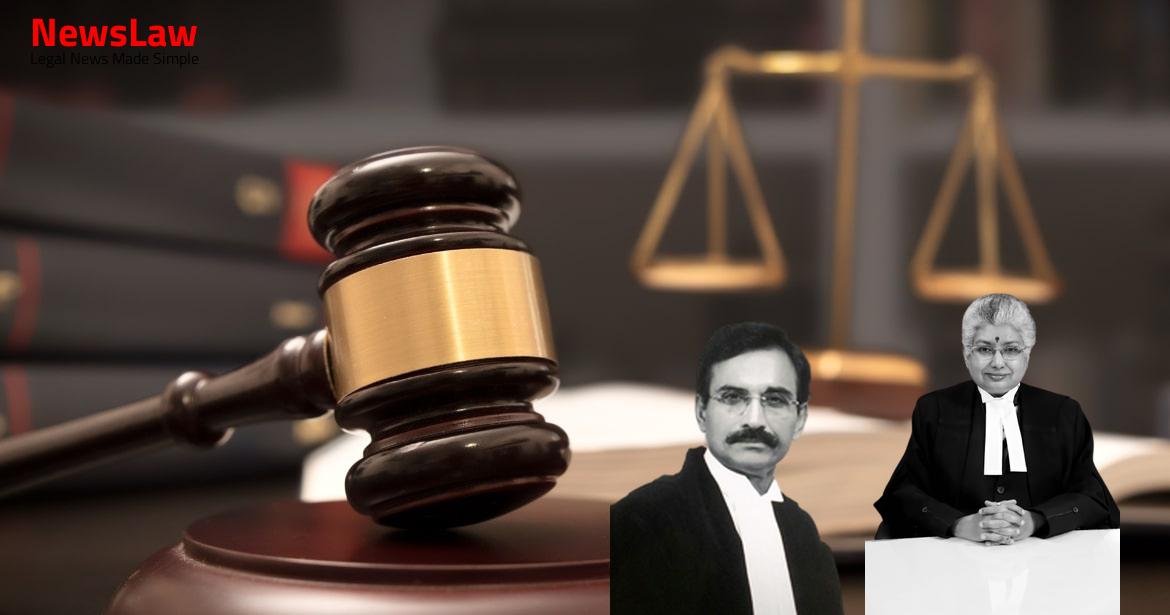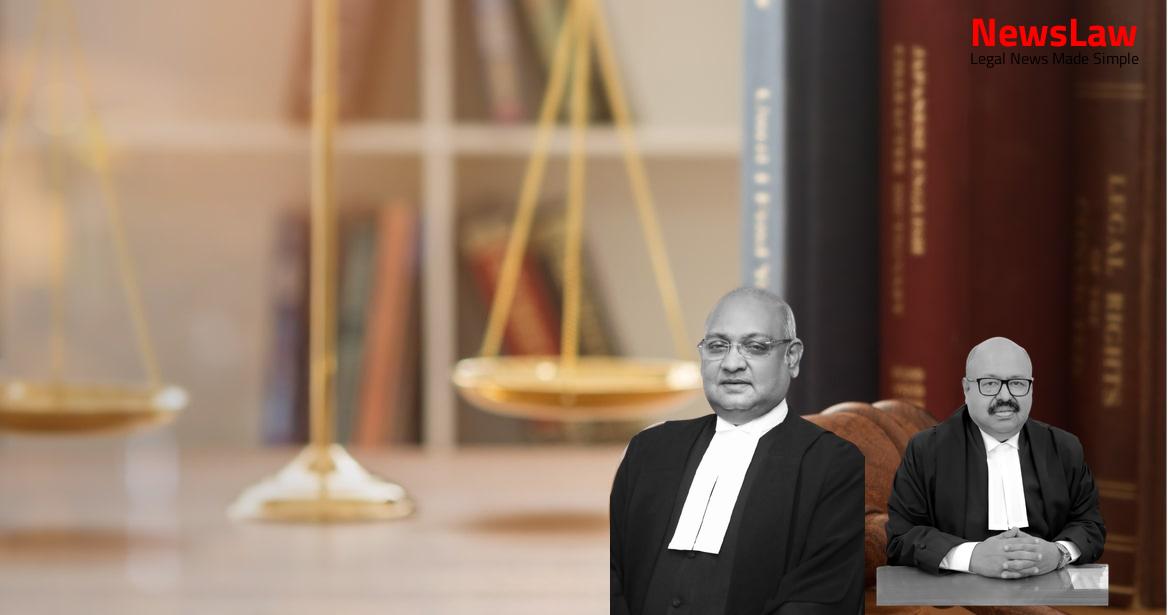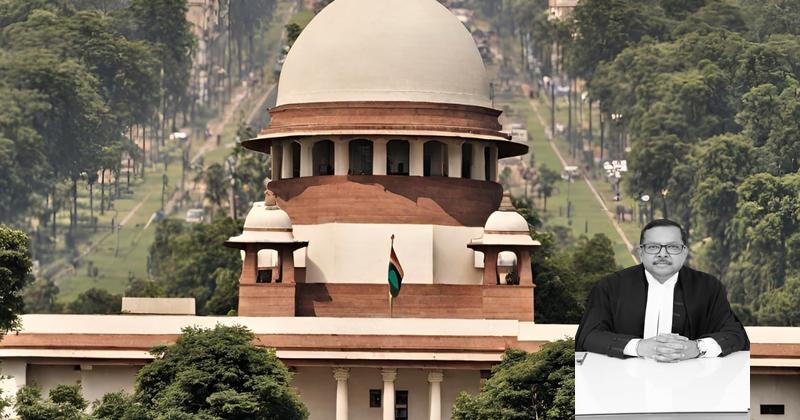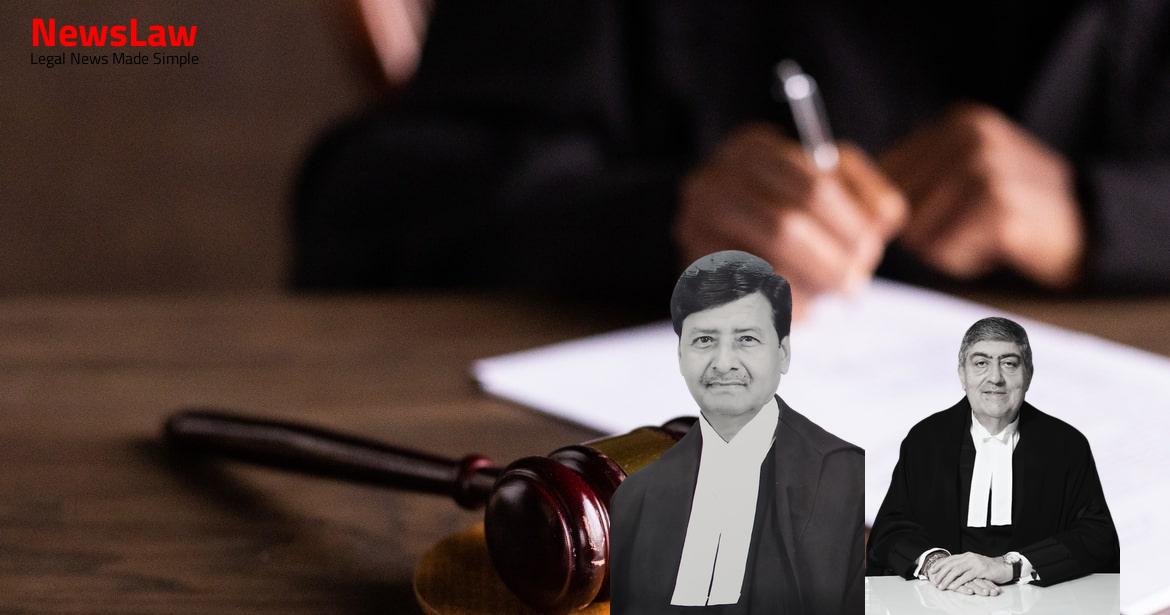Explore the detailed legal analysis conducted by the court in a landmark case involving various criminal offenses. The court’s thorough examination of circumstantial evidence, the chain of events, and the crucial consideration of the accused’s potential for reformation and rehabilitation provide unique insights into the nuances of the legal proceedings.
Facts
- The trial judge passed the judgment and order of conviction on 17 June 2016 and awarded death penalty on the same day.
- The High Court dismissed the appeal filed by the appellant and confirmed the death sentence.
- The appellant approached the Supreme Court being aggrieved by the judgment and order of the High Court dated 17 November 2017, which dismissed the appeal challenging the trial judge’s judgment dated 17 June 2016.
- The appellant was convicted for offences under Sections 363, 366, 376(2)(i), 377, 201, 302 read with Section 376A of IPC and Section 6 of POCSO Act.
- The appellant was sentenced to death for the offence under Section 302 of IPC.
- The trial judge appointed Shri Kamlesh Saraf to represent the accused.
- The appellant was awarded various other sentences for different offences including rigorous imprisonment of 3 years, 5 years, 7 years, and life imprisonment.
- PW-1 lodged a report at Jutemill Police Station about the victim going missing.
- A worship was agreed upon to conduct by the appellant.
- A charge-sheet was filed for various serious offences including Sections 363, 376, 377, 302, 201 of the IPC and Section 6 of the POCSO Act.
- Despite search efforts, the victim was not found, leading to suspicions by PW-1 and others.
- The police were informed by PW-3 about the suspicion.
- The High Court confirmed the death penalty in the impugned judgment.
Also Read: Presumption of Genuine Endorsements in Cheque Case
Arguments
- The defense counsel argued that finding human blood on nails is not significant due to delay in sample seizure and sending them to FSL.
- The recovery of evidence at 8:00 am raises doubts regarding authenticity of photography and videography.
- The police were already aware of the recovery location, casting suspicion on the evidence.
- The appellant’s fingernails were cut by a barber, not a forensic expert, undermining the integrity of evidence.
- The quick judgment and conviction without adequate defense opportunity raises procedural concerns.
- The prosecution failed to establish incriminating circumstances and the chain of events to prove guilt.
- Many missing links and inconclusive FSL reports weaken the prosecution’s case.
- The recovery of the victim’s body and other items from accessible locations does not strongly implicate the accused.
- Witness testimonies and appointment of lawyers on the same day further highlight procedural irregularities.
- The defense argues that the case is primarily based on circumstantial evidence.
- The respondent’s counsel argues that the prosecution has proven the case beyond reasonable doubt
- Emphasis is placed on the lack of focus on the appellant’s reformation or rehabilitation
- The socio-economic background of the appellant is cited as a factor to consider
- The prosecution is believed to have established all incriminating circumstances convincingly
- The heinous nature of the crime, involving rape and murder, is highlighted as deserving of the death penalty
- Finally, it is contended that in the given circumstances, the imposition of the death penalty is not warranted
Also Read: Medical Negligence and Compensation: A Landmark Decision
Analysis
- The evidence of a witness cannot be read in piecemeal.
- The appellant informed witnesses that the victim was inside a sack in the bushes near a pole beside the road in Amlibhauna.
- Witnesses immediately informed the police after the appellant’s claim about the victim’s whereabouts.
- The dead body of the victim was recovered based on information supplied by the appellant.
- The recovery was from a place known only to the appellant, not accessible to an ordinary person without prior knowledge.
- The recovery was duly executed under Section 27 of the Evidence Act.
- In cases of circumstantial evidence, the circumstances from which the conclusion of guilt is to be drawn should be fully established and consistent only with the hypothesis of the guilt of the accused.
- It is essential to exclude every hypothesis except the one to be proved, and the circumstances must be of a conclusive nature and tendency.
- The chain of evidence should be complete to leave no reasonable ground for a conclusion consistent with the innocence of the accused.
- The probability of the convict being reformed and rehabilitated should be seriously considered before imposing a death sentence.
- The reformation and rehabilitation of the accused should be analyzed, and the social reintegration of the convict must be evaluated.
- The sentencing process should not only focus on the severity of the crime but also on the criminal, his background, and the possibility of reformation.
- The prosecution must establish through evidence that the convict cannot be reformed or rehabilitated to justify an extreme punishment like death.
- The circumstances should be conclusive and irrefutable, excluding any other explanation than the guilt of the accused.
- Ends of justice would be met if the sentence of death is commuted to life imprisonment
- Consideration of the accused’s potential for reformation and rehabilitation
- Probability that the accused would not commit similar criminal acts
- Assessment that the accused would not be a continuing threat to society
- Importance of these circumstances being overlooked by the trial court and the High Court
Also Read: Remand of Writ Petition for Restoration and Decision on Merits
Decision
- The judgments and orders of conviction for various offenses are maintained.
- The death penalty under Section 302 IPC is commuted to life imprisonment.
- The punishments awarded for the offenses under Sections 363, 367, and 376(2)(f) IPC are upheld.
Case Title: LOCHAN SHRIVAS Vs. THE STATE OF CHHATTISGARH (2021 INSC 882)
Case Number: Crl.A. No.-000499-000500 / 2018



